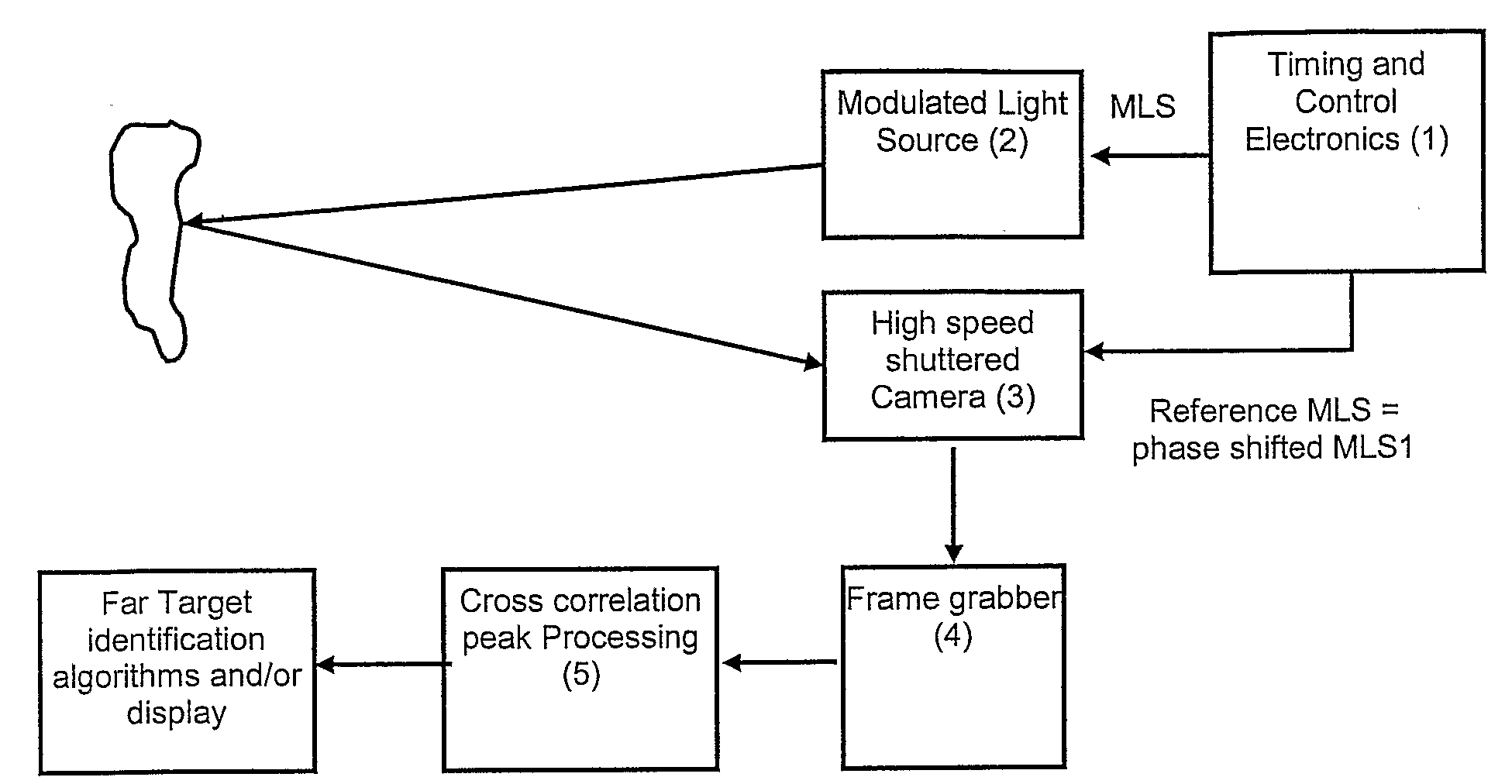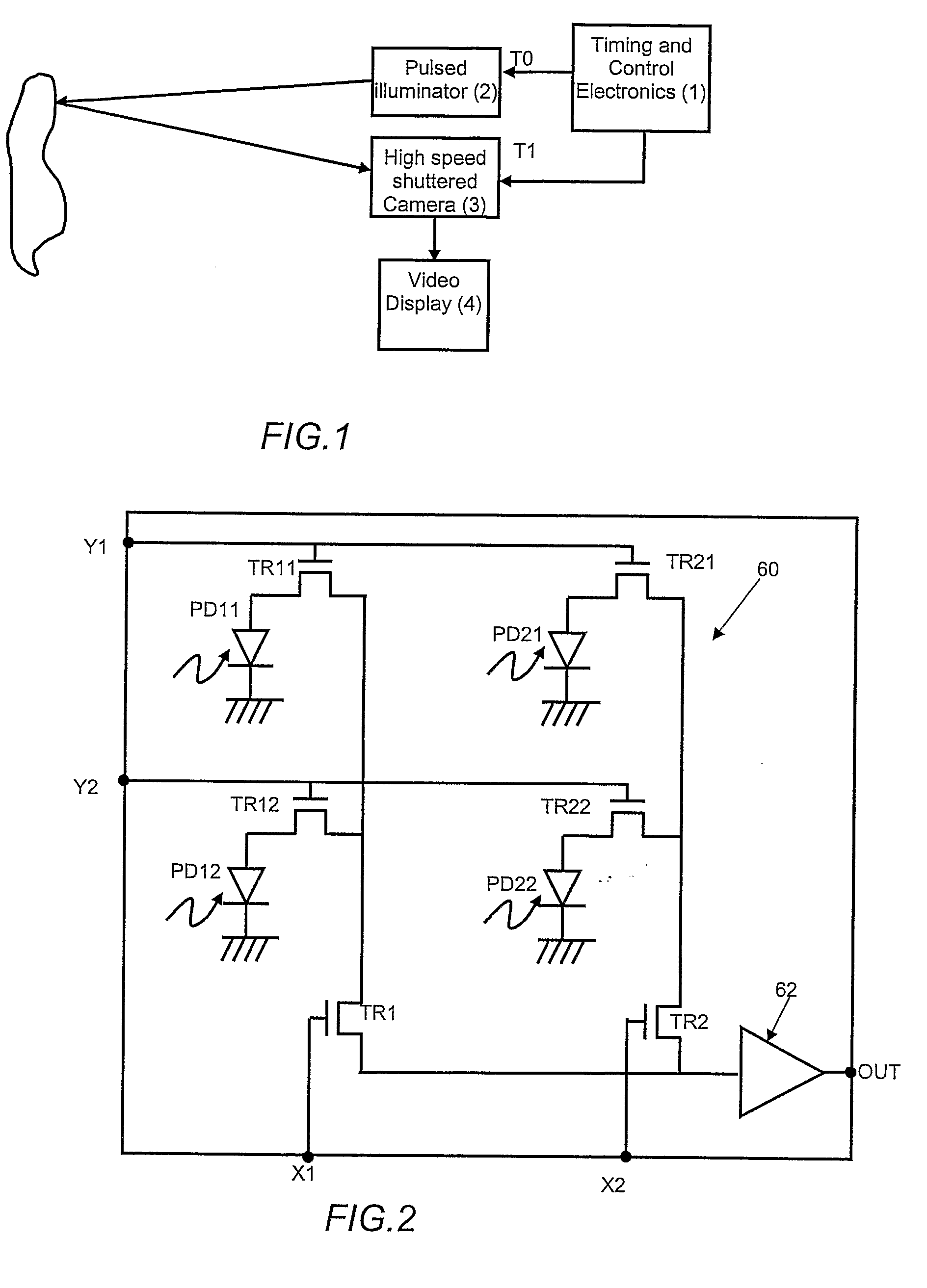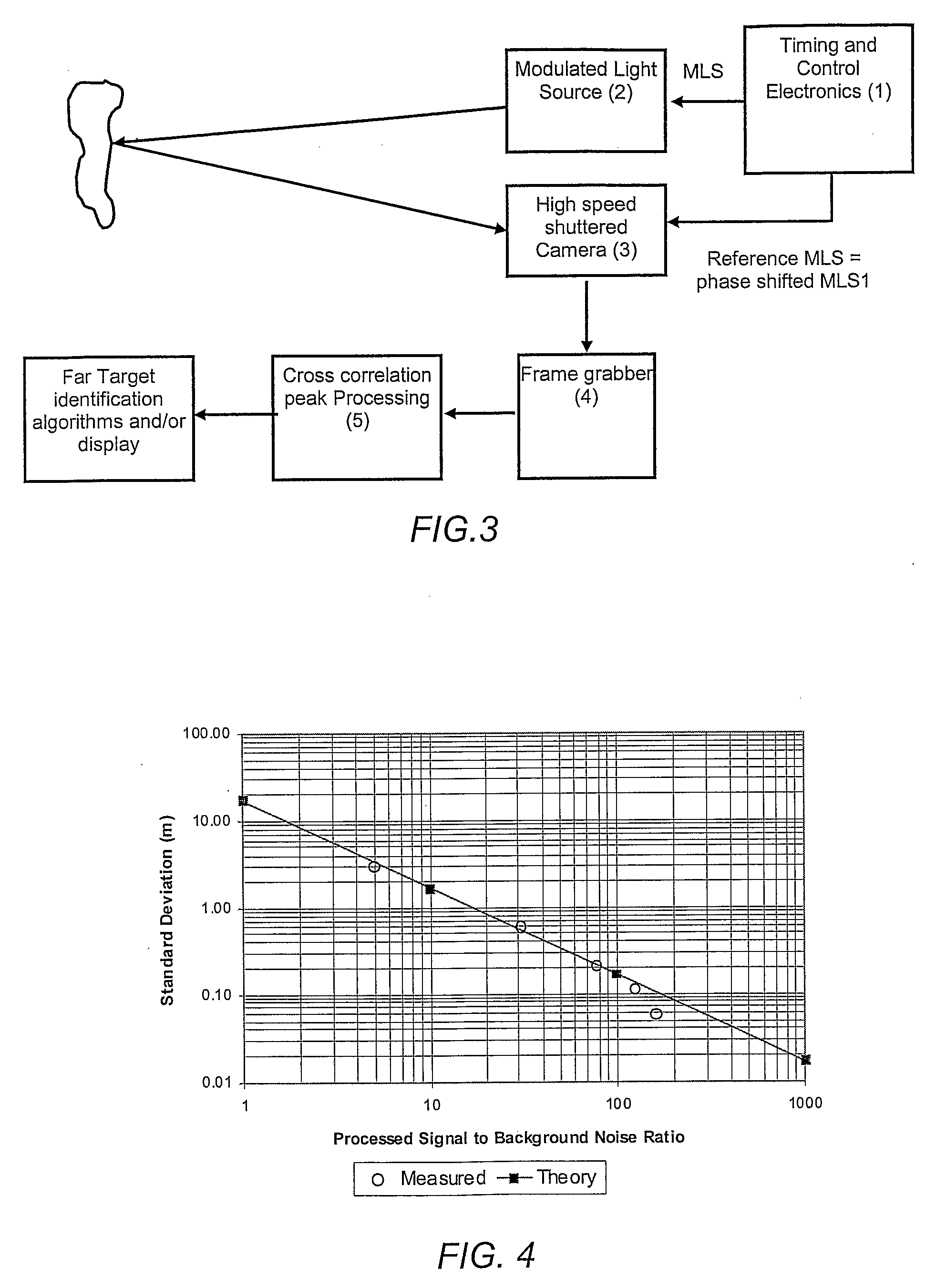Surface profile measurement
a surface profile and measurement technology, applied in distance measurement, surveying and navigation, instruments, etc., can solve the problems of limiting the application of such systems to the remote, increasing the obtuse line of sight of incident light patterns and cameras, and relatively expensive implementation
- Summary
- Abstract
- Description
- Claims
- Application Information
AI Technical Summary
Benefits of technology
Problems solved by technology
Method used
Image
Examples
Embodiment Construction
[0040]The invention provides a 3D imaging system which is specifically adapted for use with targets at long range, and which uses a stationary receiving optical system.
[0041]The invention uses a two dimensional detector, which will first be described with reference to FIG. 2.
[0042]FIG. 2 is a simplified schematic of a photodiode array for use in an imaging system of the invention, in a 2×2 format. The device consists of an array of photodiode pixels 60, each of which comprises a photodiode (PD11 to PD22) and associated transistor (TR11 to TR22), which are configured and drive to act as analogue switches. For standard video imaging applications, the device is operated in an integration mode where incident illumination is focussed upon its surface. The incident illumination generates charge within each photodiode by the photoelectric effect. During this integration period, connections X1, X2, Y1 and Y2 are all held low so that all transistors are off and the photodiodes are electrical...
PUM
 Login to View More
Login to View More Abstract
Description
Claims
Application Information
 Login to View More
Login to View More - R&D
- Intellectual Property
- Life Sciences
- Materials
- Tech Scout
- Unparalleled Data Quality
- Higher Quality Content
- 60% Fewer Hallucinations
Browse by: Latest US Patents, China's latest patents, Technical Efficacy Thesaurus, Application Domain, Technology Topic, Popular Technical Reports.
© 2025 PatSnap. All rights reserved.Legal|Privacy policy|Modern Slavery Act Transparency Statement|Sitemap|About US| Contact US: help@patsnap.com



